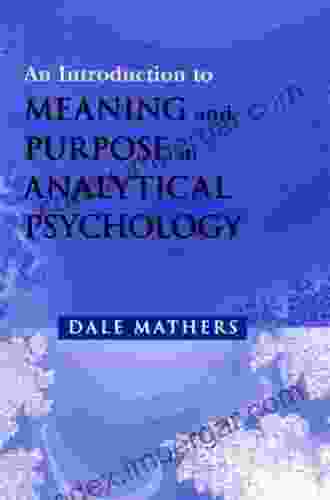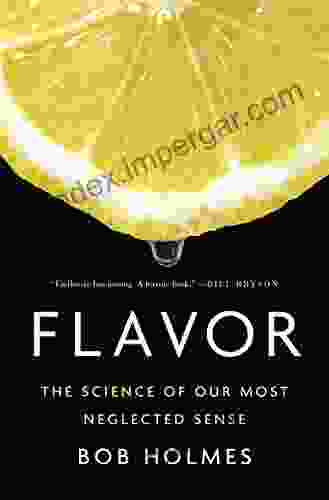Flavor: The Science of Our Most Neglected Sense

Flavor is a fascinating and complex sense that plays a vital role in our lives. Yet, it is often overlooked and misunderstood. This book explores the science of flavor, from the molecules that create it to the way our brains interpret it. You'll learn about the different types of flavors, how they are combined to create new and exciting dishes, and how our sense of flavor can be affected by our culture, environment, and personal experiences.
The Molecules of Flavor
Flavor is created by molecules that interact with receptors on our taste buds and in our noses. These molecules can be found in a wide variety of foods and beverages, from fruits and vegetables to meats and cheeses. The different types of molecules that create flavor can be classified into five basic categories: sweet, sour, salty, bitter, and umami. Sweet flavors are caused by sugars, such as sucrose and fructose. Sour flavors are caused by acids, such as citric acid and vinegar. Salty flavors are caused by salts, such as sodium chloride. Bitter flavors are caused by alkaloids, such as caffeine and quinine. Umami flavors are caused by amino acids, such as glutamate and aspartic acid.
4.7 out of 5
| Language | : | English |
| File size | : | 1521 KB |
| Text-to-Speech | : | Enabled |
| Screen Reader | : | Supported |
| Enhanced typesetting | : | Enabled |
| Word Wise | : | Enabled |
| Print length | : | 310 pages |
How We Taste Flavor
When we eat or drink something, the molecules that create flavor dissolve in our saliva and interact with receptors on our taste buds. These receptors send signals to our brains, which interpret the signals and create a perception of flavor. We have taste buds all over our tongues, but they are most concentrated on the tip, sides, and back of the tongue. The different types of taste buds are sensitive to different types of flavors. For example, the taste buds on the tip of the tongue are most sensitive to sweet flavors, while the taste buds on the back of the tongue are most sensitive to bitter flavors.
How We Smell Flavor
In addition to our taste buds, our sense of smell also plays a role in our perception of flavor. When we eat or drink something, the molecules that create flavor also travel through the back of our throats to our olfactory bulbs. The olfactory bulbs are located behind our noses, and they contain receptors that are sensitive to different types of smells. The signals from the olfactory bulbs are sent to our brains, which interpret the signals and create a perception of flavor. Our sense of smell is much more sensitive than our sense of taste, and it can detect a wide range of different flavors. This is why we can often identify foods and beverages by their smell alone.
How Our Culture, Environment, and Personal Experiences Affect Our Sense of Flavor
Our sense of flavor is not static. It can be affected by a number of factors, including our culture, environment, and personal experiences. For example, people who grow up in different cultures often have different preferences for certain flavors. This is because they are exposed to different types of foods and beverages as children. Our environment can also affect our sense of flavor. For example, people who live in areas with high levels of air pollution may have a reduced sense of smell, which can affect their ability to taste flavors. Finally, our personal experiences can also affect our sense of flavor. For example, people who have had certain medical conditions or who have taken certain medications may have a distorted sense of taste.
Flavor is a complex and fascinating sense that plays a vital role in our lives. It can affect our食欲, our mood, and our overall health. By understanding the science of flavor, we can learn how to create more flavorful foods and beverages, and we can also learn how to protect our sense of flavor from damage.
4.7 out of 5
| Language | : | English |
| File size | : | 1521 KB |
| Text-to-Speech | : | Enabled |
| Screen Reader | : | Supported |
| Enhanced typesetting | : | Enabled |
| Word Wise | : | Enabled |
| Print length | : | 310 pages |
Do you want to contribute by writing guest posts on this blog?
Please contact us and send us a resume of previous articles that you have written.
 Book
Book Novel
Novel Page
Page Chapter
Chapter Text
Text Story
Story Genre
Genre Reader
Reader Library
Library Paperback
Paperback E-book
E-book Magazine
Magazine Newspaper
Newspaper Paragraph
Paragraph Sentence
Sentence Bookmark
Bookmark Shelf
Shelf Glossary
Glossary Bibliography
Bibliography Foreword
Foreword Preface
Preface Synopsis
Synopsis Annotation
Annotation Footnote
Footnote Manuscript
Manuscript Scroll
Scroll Codex
Codex Tome
Tome Bestseller
Bestseller Classics
Classics Library card
Library card Narrative
Narrative Biography
Biography Autobiography
Autobiography Memoir
Memoir Reference
Reference Encyclopedia
Encyclopedia C E M Joad
C E M Joad Maurice Stewart
Maurice Stewart Cynthia Gabriel
Cynthia Gabriel Bryan Obash
Bryan Obash Lucy Adkins
Lucy Adkins Boris Y Zaslavsky
Boris Y Zaslavsky Bryan K Fair
Bryan K Fair Emily Mims
Emily Mims Igor A Razumovsky
Igor A Razumovsky Chef Dave Martin
Chef Dave Martin Brian Clegg
Brian Clegg Emma Bunton
Emma Bunton Clyde Edgerton
Clyde Edgerton Di Lebowitz
Di Lebowitz Hassane Benziane
Hassane Benziane Brian Hogan
Brian Hogan Bryon Moraski
Bryon Moraski R A Chamberlin
R A Chamberlin Brian Ahern
Brian Ahern C P Dadant
C P Dadant
Light bulbAdvertise smarter! Our strategic ad space ensures maximum exposure. Reserve your spot today!

 Guillermo BlairExplore the Enchanting World of Jewish Folklore in 'The Legends of the Jews'...
Guillermo BlairExplore the Enchanting World of Jewish Folklore in 'The Legends of the Jews'...
 Jedidiah HayesJourney into the Heart of Ottoman Commerce: Unveiling the Secrets of the...
Jedidiah HayesJourney into the Heart of Ottoman Commerce: Unveiling the Secrets of the... Gerald ParkerFollow ·15.6k
Gerald ParkerFollow ·15.6k Dallas TurnerFollow ·8.7k
Dallas TurnerFollow ·8.7k Matthew WardFollow ·12.1k
Matthew WardFollow ·12.1k Ian McEwanFollow ·18.9k
Ian McEwanFollow ·18.9k E.M. ForsterFollow ·11.8k
E.M. ForsterFollow ·11.8k Mason PowellFollow ·14k
Mason PowellFollow ·14k Mike HayesFollow ·14.1k
Mike HayesFollow ·14.1k Louis HayesFollow ·10.1k
Louis HayesFollow ·10.1k

 Gary Cox
Gary CoxUnlocking Meaning and Purpose in Life: An Exploration of...
In an increasingly...

 Eric Hayes
Eric HayesMemoirs of the Early Pioneer Settlers of Ohio Illustrated
A Window into the Lives of Courageous...

 J.R.R. Tolkien
J.R.R. TolkienThe Montgomerys and Their Descendants: A Saga of Courage,...
Prepare to be...

 Avery Simmons
Avery SimmonsThe Rifle Musket: The Dawn of Modern Infantry Warfare
: The rifle musket, a revolutionary...

 Jesse Bell
Jesse BellUnlock the Power of Excel with VBA and Macros: A...
Microsoft Excel is a powerful spreadsheet...
4.7 out of 5
| Language | : | English |
| File size | : | 1521 KB |
| Text-to-Speech | : | Enabled |
| Screen Reader | : | Supported |
| Enhanced typesetting | : | Enabled |
| Word Wise | : | Enabled |
| Print length | : | 310 pages |










